No Cloning !
Klonen ist ein Verbrechen
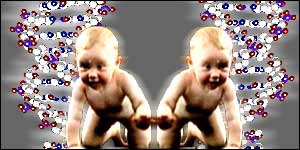 |
Bist
Du auch ich?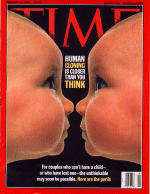 |
|
| Das 'Who is Who' der Medizin | ||
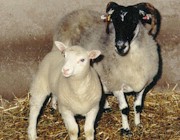 Dolly |
Antinori &
Zavos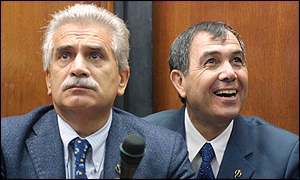 |
|
 synthetic nature |
Zavos |
|
 |
||
| Artikel | |
|
|
|
| Although you
may think this is not a good way of going about it, it will overall
be helpful in attaining my goal. You may think this will make it harder
for me to teach, or that I am attempting to pollute your mind with
my views, and with false information. However, I give you my word
that I will do my best to do none of that. In fact, my goal is to
do just the opposite. My purpose is to educate you. I want to give
you everything you need to make an educated decision, based on the
facts, and from the point of view of everyone and everything. I will
do this by giving you scientific information about cloning, views
of scientists, any relevant comments from religious perspectives,
and opinions from the general population. This way, all your thoughts
and questions on cloning are answered, and you are feed informatoin
that you needs consideration. First things first, what is cloning and a clone? The dictionary says cloning is the technique of producing a genetically identical duplicate of an organism. A clone is said to be all descendants derived asexually from a single individual, as by cuttings(like in plants), bulb divisions (like in tulips or daffodils) , by fission, by mitosis, or by parthenogenesis reproduction. |
|
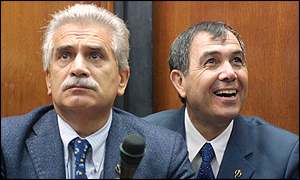 Severino Antinori and Panaylotis Zavos
Severino Antinori and Panaylotis Zavos |
|
| Italian embryologist
Dr Severino Antinori is at the centre of the heated debate on human
cloning. Three years ago, Dr Antinori announced plans to use cloning technology to help infertile couples have children. The technology had been pioneered by British scientists to produce Dolly the sheep, the world's first vertebrate clone made from an adult mammalian cell. Earlier this year, Dr Antinori predicted that he would complete the first human cloning operation within 18 months. Antinori justifies his
work as an attempt to help infertile couples He shot to prominence in 1994 when he helped a 63-year-old woman to have a baby by implanting a donor's fertilised egg in her uterus, making her the oldest known women in the world to give birth. Infertility treatment Dr Antinori, who runs a fertility clinic in Rome, plans to make his method of human cloning available to couples who cannot have children by any other means - for example, when test tube fertilisation is impossible because the man produces no sperm. "Cloning will help
us put an end to so many diseases, give infertile men the chance
to have children. We can't miss this opportunity."
Dr Severino Antinori The resulting child would, in theory, have exactly the same physical characteristics as the father. Dr Antinori told an Italian newspaper recently that more than 1,500 couples had volunteered as candidates for his research programme, and that he planned to start producing embryo clones in November. He is working in close co-operation with Dr Panos Zavos, an American fertility expert. Strong opposition Dr Antinori faces scepticism from the scientific community that he can successfully clone a human being. Some scientists argue that the process is not safe and that subjects would risk hidden health defects which would emerge only later in life. He also faces the outrage of those who oppose the procedure on ethical and moral grounds. The practice of human cloning is banned in Europe and formal legislation is now going through Congress in the United States. Dr Antinori has proposed carrying out the procedure in an unnamed Mediterranean country, or on a boat in international waters. In 1998, Dr Antinori told the BBC it would be immoral to try to clone humans just for the sake of it, but he justified his work as an attempt to help infertile couples. "Generally,
people are against human cloning, and I blame the media for pre-judging
it. I want to bring society with me, and persuade people that it
is right in rare cases to help infertile couples," he said. |
|
|
Overview: http://www.religioustolerance.org/cloning.htm |
|
| Die Welt, 14.02.2002, Kulturkampf
um die Gentechnik Gentechniker haben das menschliche Erbgut zum großen Teil entziffert. Krankheiten könnten besser geheilt, das Rätsel des Alterns und Sterbens könnte gelöst werden. Wer diese Informationen gewissenlos anwendet, kann Menschen manipulieren, kontrollieren oder züchten. Die ethische Debatte über
Möglichkeit und Praxis ist – wie einige meinen, zu spät
- entbrannt. Jüngstes Beispiel: Die Deutsche Forschungsgemeinschaft
befürwortet, Stammzellen an Embryonen zu erforschen. Dies lehnen
Kirchenleute, aber auch Politiker wie die Justizministerin Hertha
Däubler-Gmelin (SPD) ab. Andere sind zumindest für eingeschränkte
Gentests bei künstlich befruchteten Embyros, um Krankheiten
auszuschließen. WELT online dokumentiert die laufende Debatte.
http://www.welt.de/wissenschaft/gentechnik/index.htx |
 Panayiotis
Zavos Panayiotis
Zavos |
| Scientists have
finally proved that cloning an animal from a fully specialised cell
of an adult is possible - something that has been doubted even though
Dolly the sheep was supposed to have been created from a skin cell.
This now increases the probability that both therapeutic cloning (cloning
stem cells to cure disease) and reproductive cloning (cloning children
for infertile couples) are possible.
There has always been a theoretical possibility that the clones of adult animals were in fact the result of cloning from unspecialised stem cells hidden within the highly specialised tissues of a fully grown animal. This meant that although it was plausible to believe Dolly had resulted from the cloning of the specialised skin cell of a six-year-old ewe, it was equally plausible that she might have been "accidentally" cloned from an adult stem cell lurking in the skin. Now two scientists have proved beyond doubt that fully specialised cells can give rise to clones, which opens the prospect of there being two ways to clone from adult tissues - by cloning either from specialised cells or from adult stem cells. Konrad Hochedlinger and Rudolf Jaenisch of the Whitehead Institute for Biomedical Research in Cambridge, Massachusetts, published their study in the online edition of the journal Nature. "We've proven for the first time that it's possible to clone a mouse from adult cells. This question has not been answered by any of the cloning experiments to date," Dr Hochedlinger said. The scientists cloned adult mice from mature white blood cells using a new two-step process that might one day be used by doctors to generate replacement tissues for transplant operations from a drop of patient's blood. Dr Hochedlinger says the likelihood is that adult stem cells may be far easier to clone than specialised adult cells. This means that if adult stem cells can be distinguished from other adult cells - which is easily done at the moment - human cloning for both reproductive and therapeutic purposes may prove to be far easier than originally thought. "An important question for the future is whether stem cells from adults would give higher efficiencies for cloning. This might be very important for clinical applications," Dr Hochedlinger said. "We believe that stem cells from adults are easier to reprogramme so it might mean fewer errors in the procedure. It may be safer, but it needs to be shown," he said. If cloning is shown to be safer that sceptics claim, then anti-cloners will find it increasingly difficult to stop infertile couples conceiving a cloned child. (Edited
by George E Waite at 7:52 am on Feb. 12, 2002) |
|
|
|
|